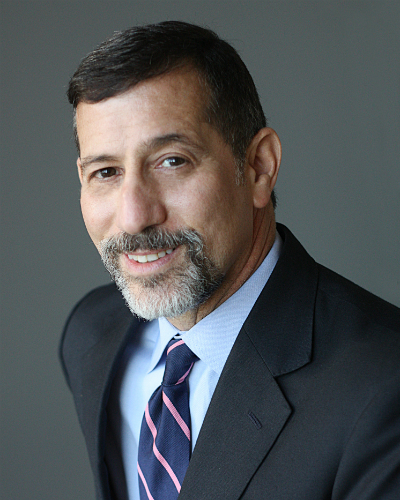January 6, the Afghanistan Withdrawal and the Future of U.S. Counterterrorism
The threat landscape will require careful prioritization.

Published by The Lawfare Institute
in Cooperation With

Editor’s Note: Counterterrorism policy confronts new challenges as 2022 begins, and it must do so as a range of new threats and concerns dominate policy priorities. Bruce Hoffman and Jacob Ware, both colleagues at Georgetown as well as experts at the Council on Foreign Relations, describe how the terrorism landscape changed in 2021, becoming more diffuse, more complex and more dangerous.
Daniel Byman
***
Throughout its history, the United States has mostly had the luxury of focusing on one ideological terrorist threat at a time. Countering terrorism even under these circumstances was always challenging, but protecting the homeland from a mono-chromatic threat landscape was comparatively straightforward. Today, however, these threats are more diffuse, more variegated and more complex. Moreover, they exist at a time of profound exhaustion and disillusionment, with the formidable resources of the U.S. national security apparatus distracted and divided by a myriad of traditional and non-traditional threats. These threats range from peer competitors to rogue states and from conventional warfare to counter-proliferation, advancing climate change, a global pandemic and the daily onslaught of cyberattacks that blur distinctions between states and criminal syndicates.
Terrorist threats to the United States have come in waves. In the early 20th century, for instance, anarchists predominated. They assassinated a U.S. president and, in the most significant terrorist incident of that era, killed more than three-dozen people in a bombing on Wall Street in 1920. In the 1960s and 1970s, the far-left constituted the main terrorist threat to national security. More than 1,000 bombings struck New York City in 1972 alone. In the 1980s and 1990s, white supremacists and anti-government extremists commanded our attention, with the deadliest modern domestic terrorist attack in U.S. history occurring in Oklahoma City in 1995. And, until recently, jihadists were the main concern throughout the beginning of the 21st Century, with 9/11 being the biggest blow. The Jan. 6 insurrection at the U.S. Capitol, among other incidents, changed all that as violent, far-right extremism has again risen in prominence.
In many respects, 2021 was a watershed both in domestic and international terrorism—a year that witnessed both the deadly attack on the U.S. Capitol and the chaotic end to America’s longest war. Rarely in U.S. history has counterterrorism suffered such a crippling double-blow in one year. Remarkably, these disasters were both largely self-inflicted. Donald Trump cajoled and implored his followers to descend on the Capitol while Congress met to certify the previous November’s presidential election. Joe Biden pulled all troops out of Afghanistan despite the protests of his intelligence and military chiefs. Both events seem poised to guide the United States into a darker, more uncertain counterterrorism future—not least by providing boosts to both domestic violent far-right extremists as well as to a staggering array of international jihadist organizations.
This widening of terrorism threats comes as resources are being re-programmed daily to address pressing threats that have elbowed aside the priority attached to counterterrorism that has kept the homeland safe from foreign threats for over two decades. The United States now faces a new type of counterterrorism dilemma: How can it address escalating and multiplying terrorism threats with fewer resources at a time of declining governmental and public interest?
The Domestic Threat and the Legacy of January 6
Over the past year, the far-right terrorist threat has continued to diversify (as we wrote about in Lawfare in Nov. 2020). A number of factions have grown in size and stature over the past 24 months, leaving a chaotic, unpredictable and increasingly violently-inclined extremist landscape. The danger posed by the various factions—and, indeed, by their ability to coalesce around common grievances—was exemplified on Jan. 6, when a dizzying array of extremists descended on Washington, D.C., to attempt to overthrow a legitimate democratic election.
Jan. 6 has provided an important boost to the movement—not least due to the Republican Party and associated media’s reluctance to concede wrongdoing. "Right from the start, it was zero threat,” Trump has said about a riot that killed a police officer. And the continuing refusal to accept the election results risks throwing the United States into an unprecedented, anti-democratic new era in which politicians can not only simply decide to reject results, but also dispatch their most loyal supporters to commit shocking acts of violence and desecration of our democratic institutions in defense of their baseless claims. As Elizabeth Neumann, a former senior Department of Homeland Security counterterrorism official, wrote the month after the attack, “It’s going to take decades to undo the damage.”
But violent far-right extremism is not the only domestic terror threat confronting those charged with the safety and security of Americans. Violence from self-proclaimed incels has escalated, with 2020 and 2021 underscoring the galvanizing effect of this male supremacist ideology on an expanding constituency both in the United States and abroad. Violent far-left extremists—motivated primarily by racially-charged police violence and inactivity against climate change—have also been emboldened. And Black nationalists, as well as the Black Hebrew Israelite religious movement, retain their violent edge. The emergence of the Not Fucking Around Coalition, an armed Black nationalist militia, is a particularly worrying development.
The pandemic provides a particularly challenging “X” factor. Radicalization experts have repeatedly raised concerns about the radicalizing potential of coronavirus shutdowns, which has led to unprecedented numbers of young people spending unprecedented amounts of time online. The constant uncertainty posed by new variants extends to the current domestic terrorism landscape. In an era in which extremism and terrorism are driven largely by social media and conspiracy theories, the coronavirus and the public health measures taken in response fuel an already highly combustible extremist fire.
The International Threat and the Afghanistan Withdrawal
Perhaps the greatest tragedy of the 20-year war on terror is that the United States has made little progress toward ensuring the long-term safety of the homeland from global Salafi-jihadist terrorism. In fact, we find ourselves back where we started: with the Taliban in charge in Afghanistan and again providing safe haven to their longstanding al-Qaeda allies. But we should not necessarily expect a replay of the pre-9/11 template, where one single safe haven and one particular organization posed the greatest threat to the United States. Today, the threat matrix of foreign terrorist groups is more complex—populated by both Shi’a and Sunni groups backed by state patrons who direct and sponsor their violence.
The Salafi-jihadist counterterrorism challenge in a post-Afghan War world is two-fold. First, the United States and its partners face an increasing number of theats. From the Sahel and sub-Saharan Africa, through Syria and Yemen, to Afghanistan, regional affiliates linked to the Islamic State and al-Qaeda have been infused with newfound purpose and momentum by the Taliban’s lightning re-conquest of Afghanistan. The United States and its allies simply do not have the resources—nor, indeed, will their publics have the patience—to address the multiplying hotspots that will continue to challenge local regimes and regional and international military coalitions. Local partners, where willing and capable, will be more essential than ever in the next phase of this lasting conflict. But the assistance, advice and support of stronger powers are diminishing as a result of a one-two punch of the drive to end these “forever wars” coupled with the ongoing re-prioritization of national security concerns.
Second, it is unclear if global terrorist adversaries will choose to return to the 9/11 model—dramatic, spectacular, highly-coordinated, international and sometimes very deadly external operations. Over the past decade, the world’s foremost Salafi-jihadist terrorist organizations reacted to counterterrorism pressure by adjusting their modus operandi. Rather than focus on coordinating complex international plots that involve deploying attackers across borders, they instead aimed to radicalize followers within their own countries to then attack soft targets as lone actors using any means necessary. That model proved successful. From Orlando and San Bernardino in the United States to a number of European capitals, local radicals attacked their homelands, pledging allegiance to a far-flung caliphate. The defeat of the physical caliphate in the Levant damaged the Islamic State’s ability to inspire attackers abroad—a blow that might now be reversed by the Taliban’s success in Afghanistan.
With the United States seemingly relaxing that pressure—or at least drawing down its deployment of ground troops in favor of so-called “over-the-horizon” counterterrorism—it remains to be seen whether Salafi-jihadist terrorism will successfully continue this “homegrown” strategy of radicalization and attack or if groups take advantage of their renewed freedom to engage in more complex international operational plotting. And, though Afghanistan poses plenty of concern, we do not yet know whether another hotspot will rise to the fore. Worrying signs in Africa suggest the next epicenter of Salafi-jihadist terrorism may emerge in a new theater.
Meanwhile, an additional threat is posed by the Iranian-backed terrorism network that winds its way from Pakistan to Yemen. The supply of funds and fighters to groups like Hezbollah in Lebanon and the Houthis in Yemen is plentiful, and Iran remains intent on striking U.S. targets in the region, partially in lingering retribution for the assassination of Quds Force leader Qassem Soleimaini in January 2020. But perhaps the most unpredictable scenario concerns the diminishing Syrian civil war. Shi’a foreign fighters from Saudi Arabia, Bahrain, Pakistan, Afghanistan and elsewhere will increasingly return to their homelands—where they may have the same destabilizing effect that their Sunni counterparts had after the Afghan War of the 1980s and defeat of the Islamic State caliphate in 2019.
Picking Priorities
Counterterrorism no longer sits atop the ladder of U.S. national security priorities. A new force rises in the East, seemingly intent on challenging U.S. global hegemony. Middle powers like Iran and North Korea continue to harass and pester, both through nuclear advances and irregular forces. And, most importantly, invisible enemies such as pandemics and climate change claim lives, expose fundamental divides within our own societies and open windows through which misinformation and conspiracy theories can infiltrate our politics. What’s more, terrorism now presents itself in far more diffuse and chaotic ways—stretching national security agencies that want nothing more than to focus on something else. The result is a growing dilemma for counterterrorism policymakers: addressing multiplying threats despite dwindling resources.
In raw numbers, 2021 was a surprisingly successful year for U.S. counterterrorism, with relatively few casualties (aside from Jan. 6, the only major, generally-recognized terrorism incident occurred in Atlanta, where a mix of misogynist and racist grievances inspired a shooting that targeted spas that employed Asian women). Though U.S. counterterrorism agencies were relatively successful in protecting the homeland from terrorism, they cannot engender complacency. The riot at the Capitol has arguably only emboldened the more violently-inclined elements of the far right. The underlying grievances which inspired the attack, most notably anger over an allegedly stolen election, have not dissipated and have generated new threats and fortuitously abortive plots. Looking beyond the homefront, the fallout from the Afghanistan withdrawal will likely be longer-term, with the Taliban likely to be unwilling or unable to prevent safe havens for the range of Salafi-jihadist terrorist organizations still intent on striking the United States and its partners. Meanwhile, escalating attacks by Iranian-backed Shi’a militias in Iraq—using drones and other stand-off weapons—target U.S. diplomatic and military facilities and personnel in that country.
In other words, the United States now sits at a precipice perhaps unprecedented in its postwar history. Is it possible to address all the threats simultaneously? If so, how? If not, where should it prioritize? And how can it prevent counterterrorism whiplash, overreacting to major events in ways that prevent the development of a coordinated, long-term strategy that transcends ideology? These questions will determine the success or failure of counterterrorism in 2022 and beyond. As the United States navigates these challenges, one lesson remains clear: Complacency over terrorist threats only creates new opportunities for these adversaries, who historically strike when national attention is preoccupied with other priorities.





